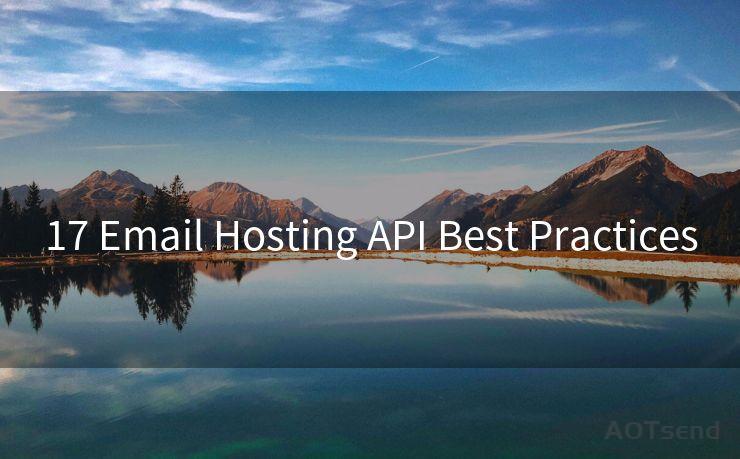17 Email Hosting API Best Practices




When it comes to email hosting, APIs play a crucial role in ensuring smooth and efficient communication between servers and clients. To make the most of your email hosting API, it's essential to follow best practices that guarantee optimal performance and security. Here are 17 best practices for email hosting APIs that you should consider implementing.
1. Secure Authentication
Ensure that your API implements secure authentication mechanisms like OAuth or API keys. This prevents unauthorized access and keeps your data safe.
2. Clear Documentation
Provide comprehensive documentation for your API. This helps developers understand how to use the API effectively and reduces the chances of misuse.
3. Rate Limiting
Implement rate limiting to prevent API abuse and ensure stability. Set reasonable limits on the number of requests per minute or hour to avoid overloading your servers.
4. Error Handling
Design your API to return meaningful error messages when requests fail. This aids in troubleshooting and improves the user experience.
5. Pagination
For APIs that return large datasets, use pagination to break down the data into smaller, more manageable chunks. This enhances performance and usability.
6. Versioning
Introduce versioning for your API to allow for updates and changes without breaking existing integrations. This ensures backward compatibility and a smoother transition for users.
7. Caching
Implement caching mechanisms to reduce the load on your servers and improve response times. Cache frequently accessed data to enhance performance.
8. Input Validation
Always validate input data to prevent malicious inputs or unexpected formats. This helps in maintaining data integrity and security.
9. Monitoring and Logging
Set up robust monitoring and logging systems to track API usage, performance, and any potential issues. This aids in quick troubleshooting and proactive problem-solving.
10. Scalability
Design your API with scalability in mind. Ensure it can handle increased traffic and demand without significant performance degradation.
11. Data Encryption
Use encryption for data transmission to protect sensitive information. This is crucial for maintaining user trust and compliance with data protection regulations.
12. Sandboxing
Implement sandbox environments for testing new features or changes. This allows developers to experiment without affecting the production environment.
13. Feedback Loop
Encourage user feedback and provide channels for communication. This helps in identifying and addressing issues quickly.
14. Deprecation Policy
🔔🔔🔔
【AOTsend Email API】:AOTsend is a Managed Email Service for sending transactional emails. Support Email Types: reminders, authentication, confirmations, notifications, verification codes, invoices, password resets, account activations, billing statements, two-factor authentication (2FA), and one-time passwords (OTP) emails, etc. $0.28 per 1000 Emails. 99% Delivery, 98% Inbox Rate.
You might be interested in:
Why did we start the AOTsend project, Brand Story?
What is a Managed Email API, How it Works?
Best 25+ Email Marketing Platforms (Authority,Keywords&Traffic Comparison)
Best 24+ Email Marketing Service (Price, Pros&Cons Comparison)
Email APIs vs SMTP: How they Works, Any Difference?
Have a clear deprecation policy for older API versions. Notify users in advance and provide充足的时间 for migration.
15. Uptime Guarantee
Strive for high uptime and reliability. This ensures that your API is always available when needed.
16. Responsive Support

Offer responsive support to users facing issues with your API. Timely assistance can significantly enhance user satisfaction.
17. Continuous Improvement
Continuously improve your API based on user feedback and performance data. Stay updated with the latest best practices and technologies.
By following these 17 best practices, you can ensure that your email hosting API provides an efficient, secure, and reliable experience for your users. Remember, the key to a successful API lies in its usability, performance, and security.




Scan the QR code to access on your mobile device.
Copyright notice: This article is published by AotSend. Reproduction requires attribution.
Article Link:https://www.mailwot.com/p3239.html



